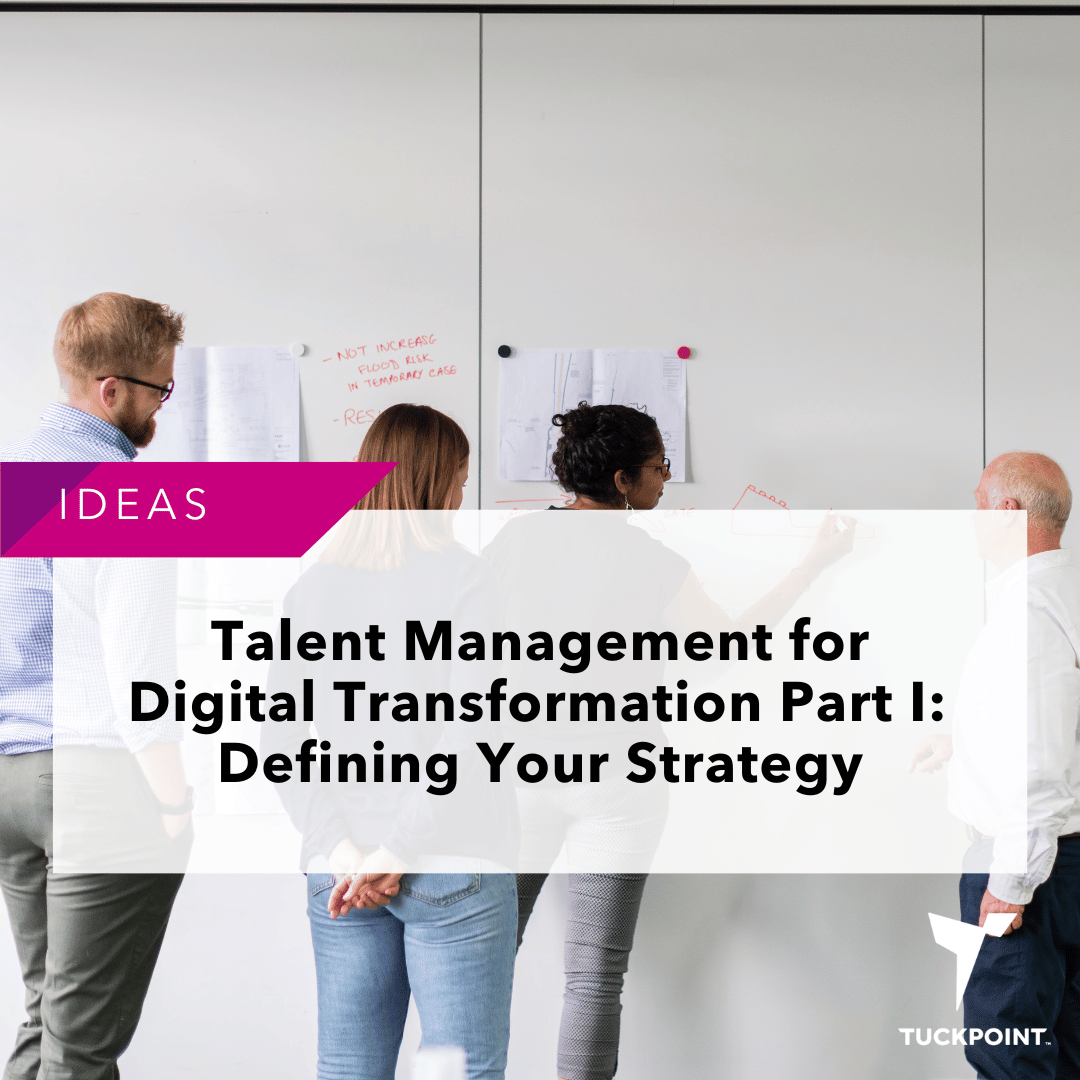Talent Management for Digital Transformation Part I: Defining Your Strategy
Digital transformation doesn’t happen by accident, and neither do the well-oiled teams behind it.
It’s no secret that the digital world has altered the way businesses attract, develop, and retain talent, but doing it well requires a sound strategy and loads of intention.
In Part I of this series on talent management for digital transformation, we’ll explore the crucial inputs to consider when defining a robust strategy that aligns talent with your organization's digital goals.
The Impact of Digital Transformation on Talent Management
No successful transformation has ever happened without the foundation of a solid team. But nailing this part is a lot more complicated than hiring a few new people, or simply creating a new practice.
As digital technologies continue to disrupt traditional business models and practices, talent management strategies also need to adapt to meet evolving demands.
Because of these shifts, companies need to craft a talent strategy that can support where the organization is headed so that teams don’t crumble as they come up against new pressures and ways of working.
Key Inputs for Setting Your Strategy
As you think about a broader organizational talent strategy, there are a few key inputs you should consider to form your approach, including:
Evolving Skill Requirements: Emerging technologies like automation and artificial intelligence have changed the game in terms of how we staff teams. Does your current team have the chops to take you where you’re headed? Do your people need specialized technology skills or platform experience? It’s critical to identify the people in the org who have (or are capable of learning) new skills, as well the skill gaps so you can invest in new talent, upskilling, and reskilling. And don’t hesitate to tap into your rock stars – the people who have been through transformation before – to help you figure out how to recruit for the team.
Talent Structure and Job Families: I highly recommend leaders collaborate with their HR and industry experts to define job descriptions, families, and requirements. Outlining specific roles, skills, and structure is critical to moving forward with intention and clarity. If you don’t define a centralized organizational structure and leave role definition up to individual managers, you end up with conflicting and competing roles, and lots of inequity and confusion. This is especially important if you’re building a practice from square one (like so many orgs that are new to transformation and have no history of hiring product roles).
Emphasis on a Digital Mindset: Digital transformation is not simply about adopting new technology – it also requires a fundamental shift in mindsets across the organization. Your talent strategy must nurture a digital-first attitude that promotes innovation, adaptability, and a willingness to embrace change. And remember, just because you wish it to be so, doesn’t mean it comes true. Make sure that you examine the truth of your current culture to understand the gap between where you are and where you want to be, then check out this post to build a bridge between the two.
Reimagining Performance and Evaluation: With new roles and responsibilities come new standards and performance criteria. Your talent strategy should rethink leadership competencies and how you define performance evaluations. It should also evolve staff reviews, the cadence of those check-ins, and markers for success that show the new skills and mindsets you’re asking your staff to embody are actually taking hold.
Leveraging Talent Networks and Partnerships: A great addition to your strategy might involve engaging external networks, such as industry associations and professional communities. Consider building strategic partnerships with educational institutions and digital transformation experts to funnel qualified talent into the org. It can also be helpful to explore flexible talent options, such as freelancers and consultants, who can drop in and supplement the team where and when it’s needed.
To harness the full potential of digital transformation, a well-defined talent management strategy is foundational to future success. By addressing this aspect at the onset of the work, you can create smoother transitions, and attract, develop and retain the right talent from the jump.
I’ll be talking more about how to train and grow your current staff in part II of this series, and how to overcome common talent pitfalls in part III. If you have any burning questions about either of those topics that you’d like answered, send me a note and I’ll make sure to address them in these future articles!
In the meantime, here are a few more resources related to talent management that you can dive into:

